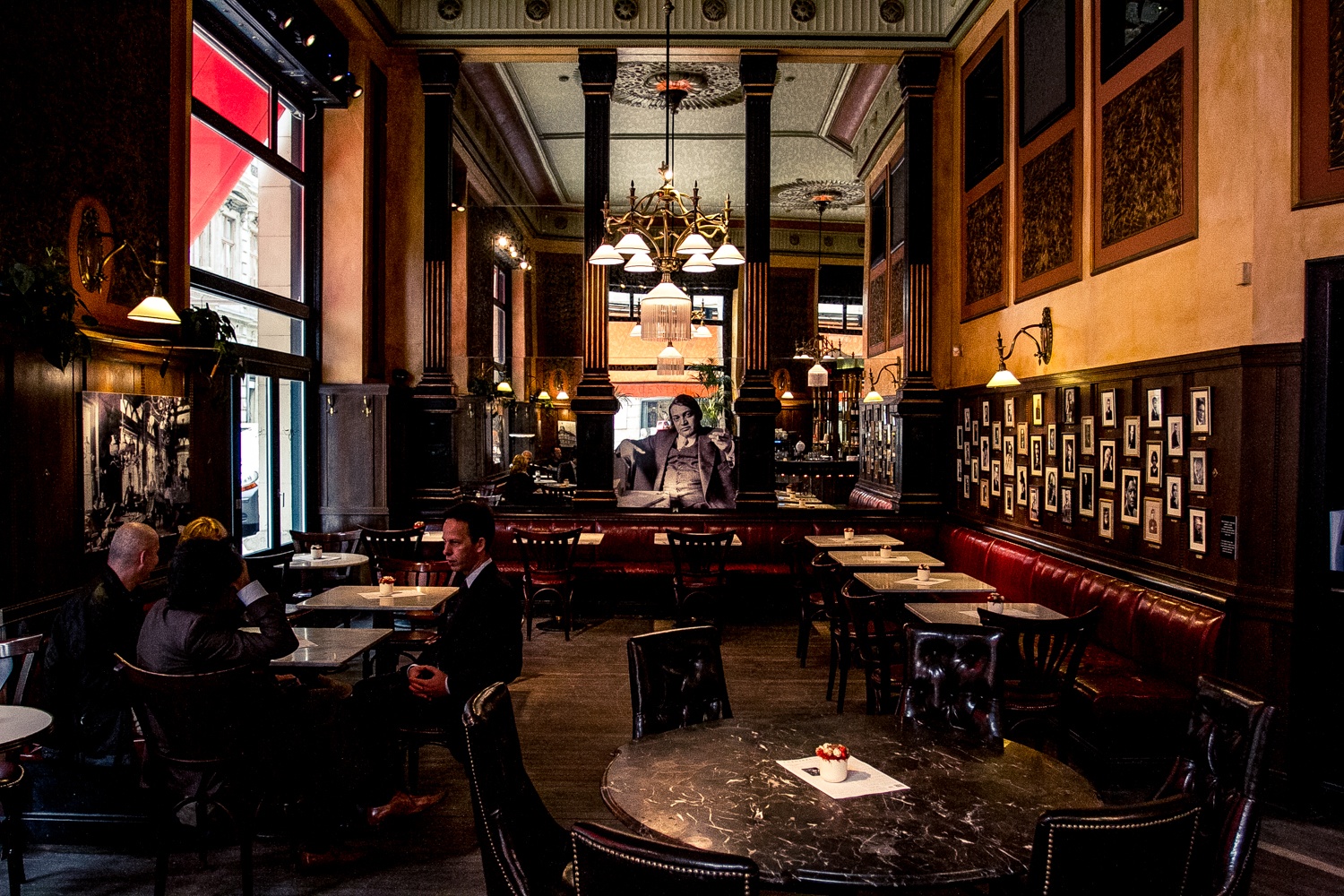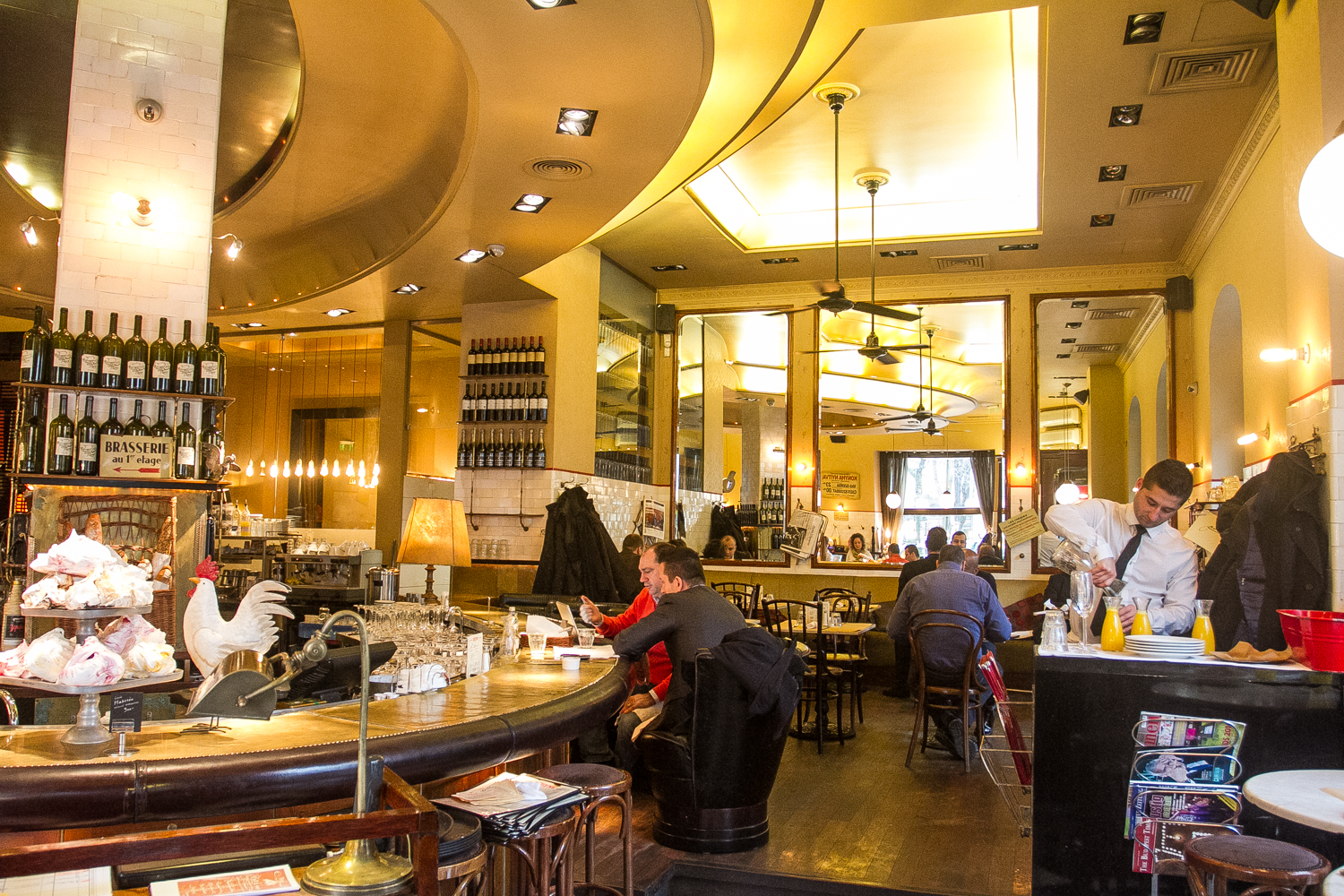1/5
Centrál
Once upon a time, this huge downtown café served as the nexus for Budapest’s literary luminaries. During the early 20th century, Centrál was the primary conclave for the editorial team of Nyugat, the most influential literary journal of Hungarian history – regular contributors that were frequently found here included groundbreaking poet Endre Ady, evocative prose-writer Dezső Kosztolányi, and social-realist novelist Móricz Zsigmond. Among other noteworthy Centrál patrons, prominent authors Géza Gárdonyi (Eclipse of the Crescent Moon) and Ferenc Molnár (The Paul Street Boys) are still reverently read today – and after the café’s extensive renovation in recent months, all of these writers and many more are memorialized with portraits decorating the classic ambience.
2/5
Déryné
For over a century now, Déryné is a treasured bistro for locals in Buda’s surrounding Krisztinaváros neighborhood behind Castle Hill – and this included globally renowned Hungarian author Sándor Márai, until his home around the corner was destroyed during World War II. Before then, Márai enjoyed relaxing and working at Déryné’s terrace tables, appreciating that during sunny afternoons the Krisztina Square church steeple across the street provided perfect shade for writing alfresco; it is quite likely that this was a site where Márai penned drafts of his masterpiece, Embers. These days Déryné still welcomes writers to hang out here and scribble passages for future literary opuses, although this place is now so popular that it can be difficult to find an unoccupied table to write on.
3/5
Hadik
Masterful Magyar man of letters Frigyes Karinthy made many contributions to Hungarian literature that remain beloved to this day – from his humorous short stories of schoolboy life to his autobiographical novel A Journey Round My Skull (detailing his own brain-tumor operation) to his fanciful translation of A. A. Milne’s Winnie the Pooh – and for many years he held court almost daily at Hadik, attracting countless fans and fellow writers seeking to share his gregarious company. After being closed for seven decades, this old-world café on one of Buda’s primary boulevards was revived with grand style in 2010, with a mural portraying Karinthy and some of the other significant wordsmiths who frequented Hadik, including Dezső Kosztolányi and Móricz Zsigmond.
4/5
Kéhli
Passionate women and flavorful feasts were omnipresent motifs in the vividly expressive works of bibulous writer Gyula Krúdy, and he regularly savored them both at Óbuda’s Kéhli restaurant, located just a short stagger away from his former home (now housing the Hungarian Museum of Trade and Tourism). Krúdy’s most famous character, the silver-tongued bon vivant Sindbad, drifts through his life and memories in an ethereal quest to delight in every appealing damsel and dish that he would encounter – and in appreciation of the author’s devotion to his favored neighborhood eatery, Kéhli’s menu still features several of the customary Hungarian meals that Sindbad devoured with zestful gusto, while the walls are graced with some of Krúdy’s enchantingly eloquent quotes.








